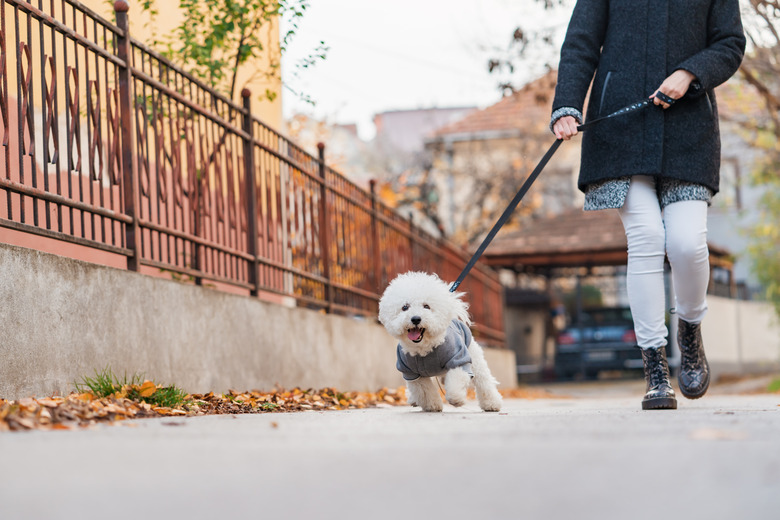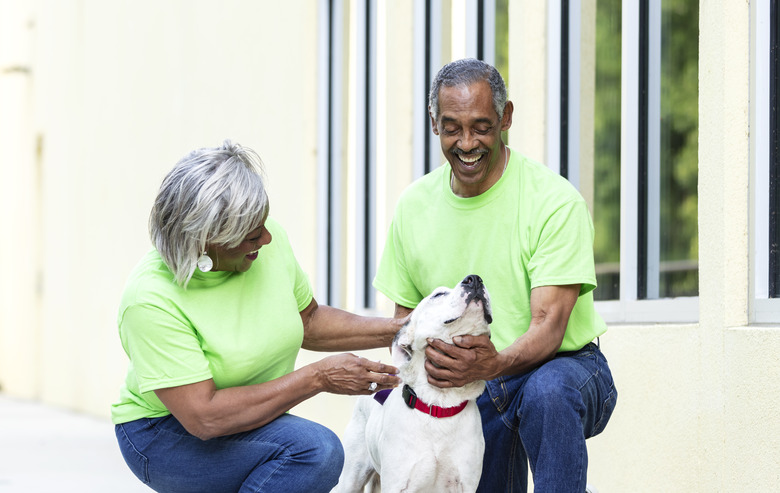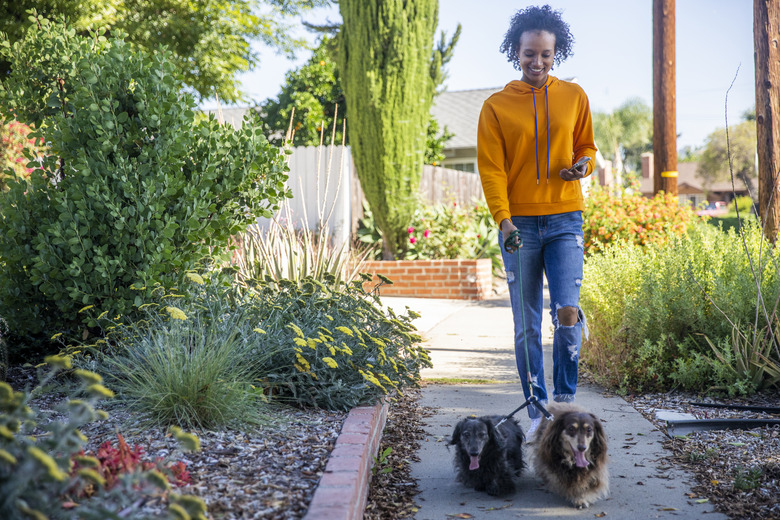Why Does My Dog Always Want To Go One Way On A Walk?
If you're a dog owner or someone who walks a dog regularly, you might be familiar with this routine: you get your canine pal leashed up, step out the door, and start to turn left — only to see your dog pull right, just as she has the last several times. In many cases, a dog will follow their leader in whatever direction the person decides, but sometimes, you might notice your dog insisting on going a certain way or down a specific street on your walks. Although not all dogs do it, many dogs prefer to walk the same route every time, but why?
Dog behavior and routines
Dog behavior and routines
Dogs are creatures of habit and for good reason. Having a set routine can make anyone feel secure, and our canine friends are no different. On the same note, experiencing the same familiar sights, smells, and sounds can also help to make a dog feel confident. These can help with certain elements of training, like potty training, not pulling during walks, and basic attentiveness toward you while you are out and about.
Routines are a great way to instill regularity and consistency in a dog's life. Strict routines, however, may end up causing more harm than good in the long run if they are adhered to too tightly. If your dog becomes heavily reliant on a routine, behavioral issues like separation anxiety can form, so it's best to aim for a structured day over a tight regimen. For example, say you want to dedicate two hours a day to exercising your dog. A strict routine could look like two, one—hour walks, at 7 a.m. and 7 p.m. exactly. A structured day would look more like two walks a day around the same times, or a visit to the park in the morning some days and a walk around the neighborhood later in the evening. Keeping a dog flexible will help them to not become so reliant on you 24/7 and will also allow for you to attend to the things in your life as they come up, in addition to caring for your dog.
Revisiting a positive experience
Revisiting a positive experience
Have you ever seen your dog find a little morsel of food in the ground and scarf it up before you had a chance to intervene? Chances are, your dog definitely remembers that happening, and probably recalls exactly where it happened and will not stop visiting that same spot — in the hopes that it might happen again. Dogs learn by the process of operant conditioning, a dog training technique that allows them to associate positive or negative feelings with certain experiences. So, if a route you take has a bank on one street that gives out treats to dogs, leads to a dog park, or you pass by a particularly friendly neighbor who loves to say hello to your dog, she may have learned through positive reinforcement that going a certain way yields good feelings.
On the contrary, if your dog refuses to walk down a certain street or in a particular direction, it could be because something negative or scary happened on one of her walks in that area. This could be something as overt as a loud crash at a construction site, or an angry citizen who yelled at your dog. Less noticeable events might also scare a dog from turning down a certain path, like a bag blowing down a street, or a lawn ornament that might pose a perceived threat can also traumatize a dog and prevent her from revisiting the area.
Wanting the walk to last
Wanting the walk to last
In some cases, a dog might be attempting to outsmart us by attempting to pull a fast one toward the end of our walk in an effort to stay out for just a little longer. You can see dogs do this when they refuse to turn down a particular street that leads toward home, or by simply sitting or laying down on the sidewalk. To keep your dog from dictating how and where the walk will go, offer your canine some mental stimulation and turn his focus onto you. Walking is a great time to practice training, such as clicker training, and loose leash walking exercises. If you have a particularly high energy dog, he may simply need more time outside to burn off that extra steam. So if it's possible, add an additional walk into your day or enlist the help of a dog walker to handle one for you. You can also keep your dog stimulated at home with toys, including puzzle toys, to keep his mind occupied in between exercise sessions.


